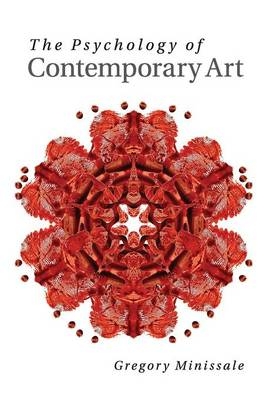
The Psychology of Contemporary Art
Seiten
2015
Cambridge University Press (Verlag)
978-1-107-56233-2 (ISBN)
Cambridge University Press (Verlag)
978-1-107-56233-2 (ISBN)
Gregory Minissale demonstrates how using robust methods for mapping conceptual processes, taken from psychology and cognitive science and adapted to the subtleties of contemporary art, can provide important insights into how we structure various kinds of abstract and concrete concepts into a network of thoughts, feelings and actions.
While recent studies in neuroscience and psychology have shed light on our sensory and perceptual experiences of art, they have yet to explain how contemporary art downplays perceptual responses and, instead, encourages conceptual thought. The Psychology of Contemporary Art brings together the most important developments in recent scientific research on visual perception and cognition and applies the results of empirical experiments to analyses of contemporary artworks not normally addressed by psychological studies. The author explains, in simple terms, how neuroaesthetics, embodiment, metaphor, conceptual blending, situated cognition and extended mind offer fresh perspectives on specific contemporary artworks - including those of Marina Abramović, Francis Alÿs, Martin Creed, Tracey Emin, Felix Gonzales-Torres, Marcus Harvey, Mona Hatoum, Thomas Hirschorn, Gabriel Orozco, Marc Quinn and Cindy Sherman. This book will appeal to psychologists, cognitive scientists, artists and art historians, as well as those interested in a deeper understanding of contemporary art.
While recent studies in neuroscience and psychology have shed light on our sensory and perceptual experiences of art, they have yet to explain how contemporary art downplays perceptual responses and, instead, encourages conceptual thought. The Psychology of Contemporary Art brings together the most important developments in recent scientific research on visual perception and cognition and applies the results of empirical experiments to analyses of contemporary artworks not normally addressed by psychological studies. The author explains, in simple terms, how neuroaesthetics, embodiment, metaphor, conceptual blending, situated cognition and extended mind offer fresh perspectives on specific contemporary artworks - including those of Marina Abramović, Francis Alÿs, Martin Creed, Tracey Emin, Felix Gonzales-Torres, Marcus Harvey, Mona Hatoum, Thomas Hirschorn, Gabriel Orozco, Marc Quinn and Cindy Sherman. This book will appeal to psychologists, cognitive scientists, artists and art historians, as well as those interested in a deeper understanding of contemporary art.
Gregory Minissale is a Senior Lecturer in the Department of Art History at the University of Auckland where he teaches contemporary art and theory. He is the author of Framing Consciousness in Art (2009) and Images of Thought (2006).
1. Introduction; 2. Brain; 3. Body; 4. World.
| Zusatzinfo | 34 Halftones, unspecified; 14 Line drawings, unspecified |
|---|---|
| Verlagsort | Cambridge |
| Sprache | englisch |
| Maße | 152 x 227 mm |
| Gewicht | 610 g |
| Themenwelt | Kunst / Musik / Theater ► Allgemeines / Lexika |
| Kunst / Musik / Theater ► Kunstgeschichte / Kunststile | |
| Geisteswissenschaften ► Psychologie ► Biopsychologie / Neurowissenschaften | |
| Geisteswissenschaften ► Psychologie ► Verhaltenstherapie | |
| Naturwissenschaften ► Biologie ► Zoologie | |
| ISBN-10 | 1-107-56233-3 / 1107562333 |
| ISBN-13 | 978-1-107-56233-2 / 9781107562332 |
| Zustand | Neuware |
| Haben Sie eine Frage zum Produkt? |
Mehr entdecken
aus dem Bereich
aus dem Bereich
Grundlagen, Klinik, Rehabilitation
Buch | Softcover (2024)
Urban & Fischer in Elsevier (Verlag)
56,00 €
Buch | Spiralbindung (2022)
modernes lernen (Verlag)
29,95 €
Grundlagen, Klinik, Therapie und Verlauf der …
Buch | Softcover (2024)
Kohlhammer (Verlag)
84,00 €


